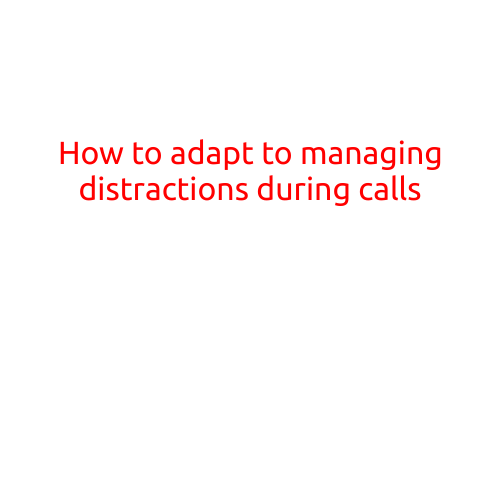
What are the Essentials of Avoiding Misunderstandings on the Phone?
In today’s digital age, phones have become an essential tool for communication. However, with the rise of phone communication, there is a growing concern about misunderstandings that can arise from phone conversations. Whether it’s a personal or professional conversation, misunderstandings on the phone can lead to miscommunications, conflicts, and even damage relationships. Therefore, it’s crucial to develop effective communication skills to avoid misunderstandings on the phone.
1. Clear and Concise Language
When communicating over the phone, it’s essential to use clear and concise language to avoid confusion. Avoid using jargon or technical terms that may not be familiar to the other person. Instead, use simple and straightforward language to convey your message. This will help reduce the likelihood of misunderstandings and ensure that your message is conveyed effectively.
2. Establish Common Ground
Before starting a phone conversation, establish common ground with the person you are speaking to. Get a sense of their tone, pace, and language to ensure that you are on the same wavelength. This will help you tailor your communication style to theirs, reducing the risk of misunderstandings.
3. Listen Actively
Listening is a crucial aspect of phone communication. When someone is speaking, actively listen to what they are saying, paying attention to their words, tone, and pace. Avoid interrupting or thinking ahead, as this can lead to misunderstandings. Instead, take the time to fully absorb the information being conveyed, and ask clarifying questions if necessary.
4. Avoid Ambiguity
To avoid misunderstandings, it’s essential to avoid using ambiguous language or leaving things unsaid. Be clear and explicit about your intentions, needs, and expectations. Avoid using words or phrases that can be interpreted in multiple ways, and instead, use specific language to convey your message.
5. Use Verbal Cues
Verbal cues can help disambiguate messages and prevent misunderstandings. Use verbal cues such as “let me clarify” or “to make sure we’re on the same page” to ensure that your message is conveyed correctly.
6. Confirm Understanding
After conveying a message, confirm that the other person understands what you are saying. Ask them to repeat back what they have understood, or ask clarifying questions to ensure that you are on the same page. This will help prevent misunderstandings and ensure that your message is conveyed effectively.
7. Be Patient
Phone conversations can be fraught with distractions, and it’s essential to be patient and forgiving. Avoid getting frustrated or agitated if there are misunderstandings, and instead, take the time to clarify the issue and move forward.
8. Use Technology Wisely
Technology can be both a blessing and a curse when it comes to phone conversations. While it can facilitate communication, it can also lead to misunderstandings if not used wisely. Use technology features such as video conferencing, instant messaging, and email to supplement phone conversations, but avoid relying solely on technology to convey complex messages.
In conclusion, avoiding misunderstandings on the phone requires a combination of clear communication, active listening, and effective language use. By following these essentials, you can reduce the likelihood of misunderstandings and ensure that your phone conversations are effective and productive.





